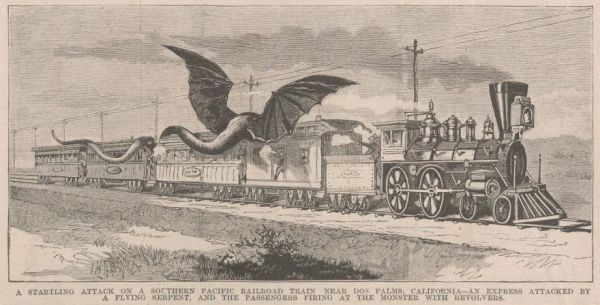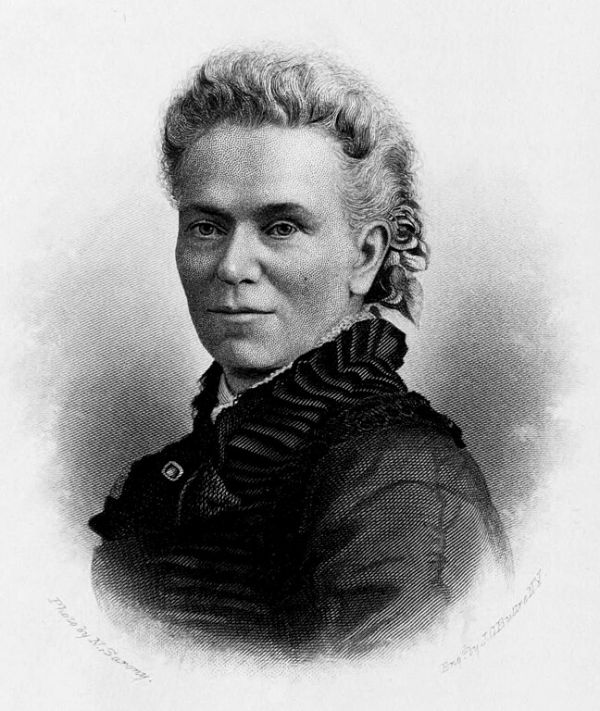Television, before it was fractured into a million channels, was a great language leveler. In elementary school, I noticed that my classmates who did not have TVs couldn't shake their hillbilly accent, while those who watched television learned to code switch at an early age, and speak like Hollywood actors when they wanted. Today, we have TV shows from around the world, so that children pick up words and accents from shows like Bluey and Peppa Pig. Dora the Explorer introduced millions of American children to Spanish. And TV is a boost to anyone learning a second language. Dr. Erica Brozovsky (previously at Neatorama) explains what is happening when children listen to the language of television.
But more TV doesn't necessarily mean better language learning in children. Too much television actually hinders their learning, when it cuts into the time they speak with the adults around them. At the end, we find that Dr. Brozovsky is just as cute without the red lipstick.

The Los Angeles Times published an account of a dragon attacking a Southern Pacific Railroad train crossing the Colorado Desert on its way to Los Angeles on January 17, 1882. The dragon resembled a snake with wings, about 30 feet long. The train clipped the dragon's tail when they collided, enraging the monster. The dragon then grabbed the train and shook it, breaking several windows, and then flew away. The newspaper talked to the engineer and fireman aboard the train as well as several passengers for their report. The story was reprinted back east, and caused quite a stir. However, it was only one of many dragon sightings in the late 19th century as people flooded into the western US and saw things they'd never seen before. These dragons were described as snakes or alligators with wings, which only sometimes had feathers. They were all said to be enormous.
The dragon sightings, or at least their documentation, died out as the West was settled, communication improved, and newspapers became somewhat concerned about credibility and fact-checking. But the legends of those sightings live on. Read the accounts of 12 dragon sightings in the Old West at ThunderbirdPhoto.com. -via Strange Company
(Image: The Illustrated Police News, March 18, 1882)
Elle Cordova is a musician and comedian who specializes in one-woman sketches in which she personifies different objects. In the past, we've seen her conversation among different fonts. Most recently, she brings together the Holy Grail, Excalibur, and the Ark of the Covenant.
The three holy relics interview an applicant to join their crew. It's a modern object of desire and veneration common in households yet surprisingly elusive at times. Watch the elders ask insightful questions of the newcomer, testing her commitment to the lifestyle of a legendary artifact.
At the end of the sketch, the trio consider other applicants for the position.
-via Laughing Squid
Hoyte van Hoytema, the cinematographer behind Her, Interstellar, Dunkirk, and Oppenheimer, brings to us this long-form narrative commercial for Volvo's XC90 SUV.
The point is, of course, to sell us cars. The hook for the ad is buried deep into the soul of every parent who has ever seen his or her child in life-threatening situation. It's a common if not normal experience and one that never leaves your mind completely.
Hence the genius of van Hoytema's commercial. It taps into both the delight and fear that begins with first learning that you're having a baby and ends . . . somehow, depending on about a million everyday decisions.
-via Normie MacDonald
A levitating frog, a necrophiliac duck, taxi drivers’ brains — the Ig Nobel prizes have shined a spotlight on offbeat work
— nature (@Nature) November 19, 2024
Here’s an inside look at how winners feel about this sometimes unwanted ‘honour’ https://t.co/hryjpzYygE
Every fall, we cover the awarding of the Ig Nobel prizes from The Annals of Improbable Research. These lighthearted awards highlight research that seems weird, silly, or outrageous. But that's how science is done, one tiny step at a time to reveal what's going on in our world. Last year, more than 9,000 research papers were nominated for the Igs, and when potential winners are selected, they have the option of turning down the honor. Eleanor Maguire once declined to accept the award, because she was afraid it would hurt her career. But three years later she was up for the award again and decided to accept it. Far from hurting her career, she was later introduced as the “the most famous member” of a science panel, even though that panel included actual Nobel prize winners. Well sure, we may laugh about the Ig Nobel prizes, but we remember them because odd and obscure science studies are more fun to read about than the "serious" science that wins Nobel prizes. An article in the journal Nature tells us how winning an Ig Nobel affected the careers of several scientists, including one who won an Ig Nobel and a few years later won the Nobel prize. -via Damn Interesting
To understand the context of this Letters Live performance, you need to know the cast of characters.
Dr. Serge Voronoff transplanted glands from monkey testicles into human men in the 1920s, in order to "rejuvenate" them and extend their lives.
Dr. Edward Bach was a bacteriologist who warned in 1928 that not only was Voronoff's surgery a con, but that the patients would take on a chimpanzee's "worst characteristics." While chimpanzees are not monkeys, Voronoff used the glands of both baboons and chimps.
Consul Junior was a chimpanzee at the London Zoo, and a favorite among visitors. A letter from Consul Junior appeared in the London Daily News shortly after Bach's statement.
Irish playwright George Bernard Shaw was the actual author of the chimp's letter.
Actor Andy Serkis is a motion capture specialist who played Caesar in the 21st-century Planet of the Apes movies. In this video, he reads that letter from the chimpanzee objecting to what Bach considered a chimp's "worst characteristics." He really gets into the role. -via Laughing Squid
for my last lunch in paris i went to a bistro where, at the end of your meal, they bring you card and a fountain pen to write yourself a letter which they will send in a year’s time 🤎 pic.twitter.com/h4hsahQuby
— kitty 🤎 (@pastryangel) November 20, 2024
X user @pastryangel tells us about a unique restaurant in Paris in the fashionable and quaint Saint-Germain district in Paris. Bistro des Lettres offers gourmet dining with amazing dishes that you can view on Instagram. It's a memorable experience for that reason alone, but also because you can compose a letter to your future self which the establishment will send your way in a year.

Imagine you are a chemist, working hard to find a synthetic replacement for shellac. You mix some chemicals together and get a blob of gunk that's not liquid enough for your purpose. But instead of throwing it out, you find you've invented plastic. That was in 1907, and while Leo Baekeland himself called the material "plastic," it became known as Bakelite after its inventor. This kind of thing happens a lot in science experiments, so you need to be open to the idea that your screwups might be useful for something besides what you were aiming for. All of our artificial sweeteners were discovered when a scientist was trying for something else entirely, because you know that scientists can't help but taste what they are studying. Read the stories of five such developments wrestled from laboratory accidents at Cracked, none of them leading to artificial sweeteners.
(Image source: Wikimedia Commons)
Wouldn't it be nice to be as fashionable as a cop? Miami Vice was the hottest show on TV from 1984 to 1989. The series focused on two very stylish police officers fighting the war on drugs in the Art Deco neon glow of southern Florida. There were plenty of established stars in the "drug dealer of the week" role, as well as up-and-coming actors, but as the show went on, famous recording artists wanted to get in on the action, as well as athletes, models, and other notable figures. Many of the "unknowns" who appeared on Miami Vice got noticed and became famous for other roles later. In this supercut, they stand out because they look so young. Well, that was 40 years ago.
This list of Miami Vice guest stars is far from comprehensive. A few years ago, we posted about a massive Twitter thread that was a Who's Who of Miami Vice characters. You'll find an even longer list at Wikipedia. -via Laughing Squid

Memento mori translates from Latin to mean "remember that you will die." It alludes to a common artistic theme that began in the medieval period featuring skeletons and other symbols of death. To bring that idea into the modern age, Mefite condour75 created a generator that compares your lifespan to a movie. It's called Memento Movi. Enter your date of birth and expected lifespan (you can be as optimistic as you like, but the average is 79 years) and then pick a movie. You will get a frame from that movie that corresponds with the present day in your lifespan, like a progress bar. The list of films is alphabetical and extensive, so I picked The Blues Brothers. I got the image above and this explanation.
You are 87.1% through The Blues Brothers (1980).
I had to laugh, because not only am I too far into it, it's a wreck. You can try this with movie after movie, and you don't really have to be truthful about your age, but if you are, it can be jarring. How far is your life into Star Wars, Young Frankenstein, Home Alone, It's a Wonderful Life, or Jaws? -via Metafilter
The science fiction drama Megalopolis was supposed to be Francis Ford Coppola's magnum opus. Coppola wrote, directed, and produced the movie using his own funds, to bring to life an idea he had been nursing since 1977. The plot is presented as an analogy for the fall of the Roman Empire, but set in an alternate present day with supernatural features. It's also a political statement and a drama about a family. Are you still with me? It almost made sense when you watched the trailer, but ended up as a total mess. Even the star power of Adam Driver, Giancarlo Esposito, Aubrey Plaza, Shia LaBeouf, Jon Voight, Laurence Fishburne, Talia Shire, Chloe Fineman, D. B. Sweeney, and Dustin Hoffman couldn't save this movie. Critics and audiences alike were bewildered about what the film was trying to achieve. Megalopolis was made on a budget of $120-136 million, but barely made back 10% of that. It was low hanging fruit for Screen Junkies.

My family always made cranberry sauce for Thanksgiving by putting fresh cranberries and oranges through a grinder, and then adding sugar. My husband and his kids always bought canned cranberry sauce, served in slices, and it was tradition. So I served both, and had way too much left over. That's a story that happens all across America. But you can have have it both ways when you make your own jellied, molded cranberry sauce from fresh cranberries!
The process is simple- cook and puree your cranberries, strain out the skins, then cook some more with sugar and your favorite flavorings until it's jelly, then chill in a mold. The mold can be anything, including a can if you want the traditional experience. It's almost like making homemade preserves, but in a smaller amount. You can even make it days ahead of the feast! The result looks and feels like canned jellied cranberry sauce, but the flavor is fresh and fruity, better than any from a can. Get the recipe and all the instructions, including the science behind making jelly, at Serious Eats.
(Image credit: Serious Eats/Vy Tran)
Spock's death in The Wrath of Khan in 1982 featured an emotional scene between Spock and Captain Kirk. Then Spock was brought back to life in the next Star Trek film. That wasn't going to work when actor Leonard Nimoy died in 2015. The 2016 movie, Star Trek Beyond, wrote Spock's offscreen death into the script, leaving fans feeling both sad and shortchanged. A new video titled 765874 - Unification shows the scene we didn't get in the Star Trek movies or TV shows- Kirk leaving the Nexus and going to say goodbye as Spock draws his last breath. A computer-enhanced William Shatner stars with Lawrence Selleck as Spock, with his face computer-generated as Leonard Nimoy. There are also guest appearances by Star Trek characters from different galaxies and different timelines that you'll recognize.
The video is only 7:45; the rest is credits, which have some emotional moments themselves. Read more about the context of the video within the world of Star Trek at Geeks Are Sexy.

When the Statue of Liberty was unveiled in 1886, Matilda Gage shouted from a megaphone that it was a travesty to portray liberty as a woman when women didn't have the right to vote. Gage was part of the trio who launched the national women's suffrage movement along with Susan B. Anthony and Elizabeth Cady Stanton, until she parted with them over the alliance with the Woman’s Christian Temperance Union. Gage was opposed to mixing religion with the right to vote. She wrote about the persecution of smart or unruly women as "witches" from a feminist point of view, after critics called her satanic and a heretic. Gage's adventures also crossed paths with the Underground Railroad, Sitting Bull, Anthony Comstock (of the Comstock laws), and the Theosophical Society.
Gage had four children. The youngest was Maud, who dropped out of Cornell to marry her roommate's cousin, an actor and failed chicken farmer named L. Frank Baum. Gage lived with the Baums off and on for the rest of her life, as Baum launched one failed business after another. When Gage also suffered a financial setback, she encouraged both Frank and Maud to write fantasy stories to sell, even providing ideas to work around. Baum found success selling short stories to magazines, and in 1900 published The Wonderful Wizard of Oz. Read about Matilda Gage's life and her influence on Baum and his writing at Smithsonian.
Cassowaries are scary birds. They are a part of the ecosystem of Australia, where the wildlife wants to kill you. These "murder turkeys" have five-inch claws, may grow up to six feet tall, can run at more than 30 mph, and they wear helmets. They are also among the few species of bird that have killed humans, although that is relatively rare. Still, just because a cause of death is rare, that doesn't mean you tempt fate, yet in this video we see plenty of people getting close to cassowaries. Dr. Ann Jones explains what cassowaries are all about, and why you shouldn't mess with one. You won't win. They don't like being insulted, like when someone compares their wattles to neck testicles, or when someone looks at them. While the cassowary has been called the world's most dangerous bird, they kill fewer people than ostriches do. Ostriches are bigger, and you don't want to mess with them, either. -via Damn Interesting




